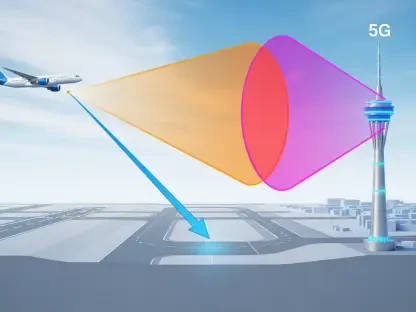In today’s interview, we have the pleasure to speak with Vladislav Zaimov, a renowned telecommunications specialist with significant expertise in enterprise telecommunications and the risk management of vulnerable networks. He will shed light on the evolution of fixed network standards, particularly the emergence of F5G-A, and its implications for the AI era.
Can you explain what F5G-A is and how it differs from previous fixed network standards?
F5G-A, short for Fifth Generation Advanced, is an evolutionary step in fixed network standards, representing the latest advancement in the field. Unlike its predecessors, which did not have a clearly defined generational growth structure, F5G-A is designed to deliver high-speed, low-latency, and ultra-reliable connectivity, essential for AI-driven processes. This marks a more strategic and coordinated development phase for fixed networks, drawing parallels to the maturity we observed in the transition from 3G to 5G in mobile networks.
How does the development of F5G-A compare to the evolution of mobile networks from 3G to 5G?
The development of F5G-A mirrors the evolutionary trajectory witnessed in mobile networks. With mobile advancements, each generation brought significant improvements in speed, latency, and connectivity, culminating in the heavily data-centric 5G. Similarly, F5G-A represents a leap forward in fixed networks, promising consistent improvements in performance benchmarks like speed, adaptability, and reliability, akin to the enhancements in mobile connectivity over the generations.
What role does the World Broadband Association (WBBA) play in the development and promotion of F5G-A?
The WBBA plays a pivotal role in shaping and promoting the F5G-A standard. By collaborating with the European Telecommunications Standards Institute (ETSI) and other international standards bodies, WBBA contributes to crafting a global framework and roadmap for fixed networks. Their efforts focus on guiding regional development aligned with F5G-A standards, supporting industry education through white papers and events, thereby accelerating the adoption of these new standards internationally.
How does F5G-A align with the standards set by the European Telecommunications Standards Institute (ETSI) and the International Telecommunications Union (ITU)?
F5G-A is intricately aligned with the standards outlined by ETSI and ITU, forming a cornerstone of fixed network development. These alliances ensure that the advancements within F5G-A address global connectivity needs coherently, with a collaborative approach that integrates regional advancements into a universal framework. Such alignment is critical for consistent, reliable adoption and rollout of next-gen connectivity solutions worldwide.
Why is F5G-A considered crucial for the AI era?
As AI continues to integrate into daily operations and business processes, the demand for fast, seamless, and low-latency networks skyrockets. F5G-A meets these needs by providing the necessary bandwidth and reliability that AI workloads demand. This includes supporting data flows for AI applications that operate across distributed networks, be it on the cloud, at the edge, or on-premises, making it an essential component of AI-ready infrastructure.
What are some key technological features of F5G-A, and how do they improve network performance?
Key technological features of F5G-A include 50GPON, Wi-Fi 7, and 400G/800G optical transport. These technologies collectively enhance network capabilities by providing higher bandwidth, increased connection density, and superior reliability. Such advancements are crucial for accommodating the rapid data transfers and extensive connectivity required by modern digital applications and services.
Can you provide details on the “10Gigabit Everywhere” concept and its significance?
The “10Gigabit Everywhere” concept embedded within the F5G-A standard represents the vision of delivering 10 Gbps connectivity universally, to homes and businesses alike. This marks a significant milestone in ensuring that ultra-high-speed internet is accessible beyond urban centers, paving the way for consistent broadband experiences and enabling the proliferation of data-heavy applications like AI to reach broader audiences.
What core technologies does F5G-A leverage, and what role do they play in enhancing connectivity?
F5G-A leverages a suite of core technologies, such as 50GPON, Wi-Fi 7, and advanced optical transport methods like 400G/800G. These technologies play a crucial role in enhancing connectivity by increasing data transmission speeds, connection reliability, and reducing latency. Such technological foundations ensure that F5G-A networks can support current and future needs, particularly the high demands of AI and other emerging digital technologies.
How does F5G-A propose to overcome connectivity challenges in urban, suburban, and remote areas?
F5G-A addresses connectivity challenges by adopting a strategic deployment approach that combines fiber optics for high-bandwidth areas and fixed wireless access (FWA) for more remote regions. This flexible strategy ensures comprehensive coverage, allowing for high-speed, reliable internet access regardless of geographical challenges, thus bridging the digital divide across diverse landscapes.
How are service providers, like Hong Kong Telecom, responding to the F5G-A standard and its adoption?
Service providers, including Hong Kong Telecom, are actively acknowledging the significance of the F5G-A standard. They are adapting their infrastructure to support these advancements, recognizing the enhanced capabilities that F5G-A offers for meeting the industry’s progressive demands. This includes constructing robust network foundations to accommodate burgeoning use cases like AI, high-resolution video streaming, and online gaming experiences.
What new-age use cases does F5G-A enable, particularly concerning AI applications?
The capabilities afforded by F5G-A open doors to a myriad of innovative use cases, including advanced AI applications. These encompass AI-driven analytics, autonomous systems, AI-enhanced cloud computing, and next-gen immersive experiences. The high-speed and reliable connectivity offered by F5G-A ensures that these applications can function smoothly and effectively, fuelling further innovation in AI technologies.
How is AI influencing the planning and deployment of networks under the F5G-A framework?
AI has begun reshaping how networks are planned and deployed, particularly under the F5G-A framework. It influences decision-making in deployment methods, like choosing between fiber and FWA or satellite options, and optimizes network design for maximum efficiency and performance. This allows networks to be more responsive to dynamic demands and environmental conditions, leading to smarter, more seamless connectivity solutions.
What impact does AI have on network bandwidth requirements for both businesses and consumers?
AI significantly increases the bandwidth requirements for both businesses and consumers due to the data-intensive nature of AI processes and applications. As AI functions require vast amounts of data processing and exchange, networks must accommodate these high volumes of data without compromising on speed or reliability, emphasizing the need for the robust capabilities provided by F5G-A.
Could you elaborate on the role AI plays in the pre-deployment phases of broadband, as mentioned by the WBBA?
AI is instrumental in the pre-deployment phases of broadband through its ability to analyze large datasets and predict optimal deployment strategies. According to WBBA findings, AI aids in crucial decisions such as selecting the most effective technologies for specific environments, ultimately ensuring that infrastructure is both future-proof and sustainable. This usher’s efficiency and precision in network rollouts, aligning them with emerging technology demands.
How does F5G-A aim to improve energy efficiency, latency, and location accuracy?
F5G-A aims to enhance energy efficiency by deploying state-of-the-art technologies that consume less power while maintaining high performance. It targets latency improvement by ensuring sub-millisecond transmission times to support real-time applications. Additionally, it enhances location accuracy, critical for services like IoT and autonomous systems, by integrating precise control and management protocols within its framework.
In your view, how essential is the alignment of standards bodies, industry associations, and telecom providers for the successful deployment of F5G-A?
The alignment among standards bodies, industry associations, and telecom providers is paramount for the successful deployment of F5G-A. Such harmonious collaboration ensures uniformity in standards, which facilitates widespread adoption and scalability of the infrastructure. Shared objectives and unified approaches pave the way for seamless integration and operation of next-gen technologies, thereby enhancing global connectivity.
What are the broader implications of F5G-A for the future of digital innovation?
F5G-A is poised to act as a catalyst for digital innovation, providing the robust foundation required for the next wave of technological advancements. Its high-speed, reliable connectivity will empower innovation in fields like AI, virtual reality, IoT, and smart cities, ultimately driving economic growth and societal transformation by enabling new capabilities and experiences in the digital realm.









